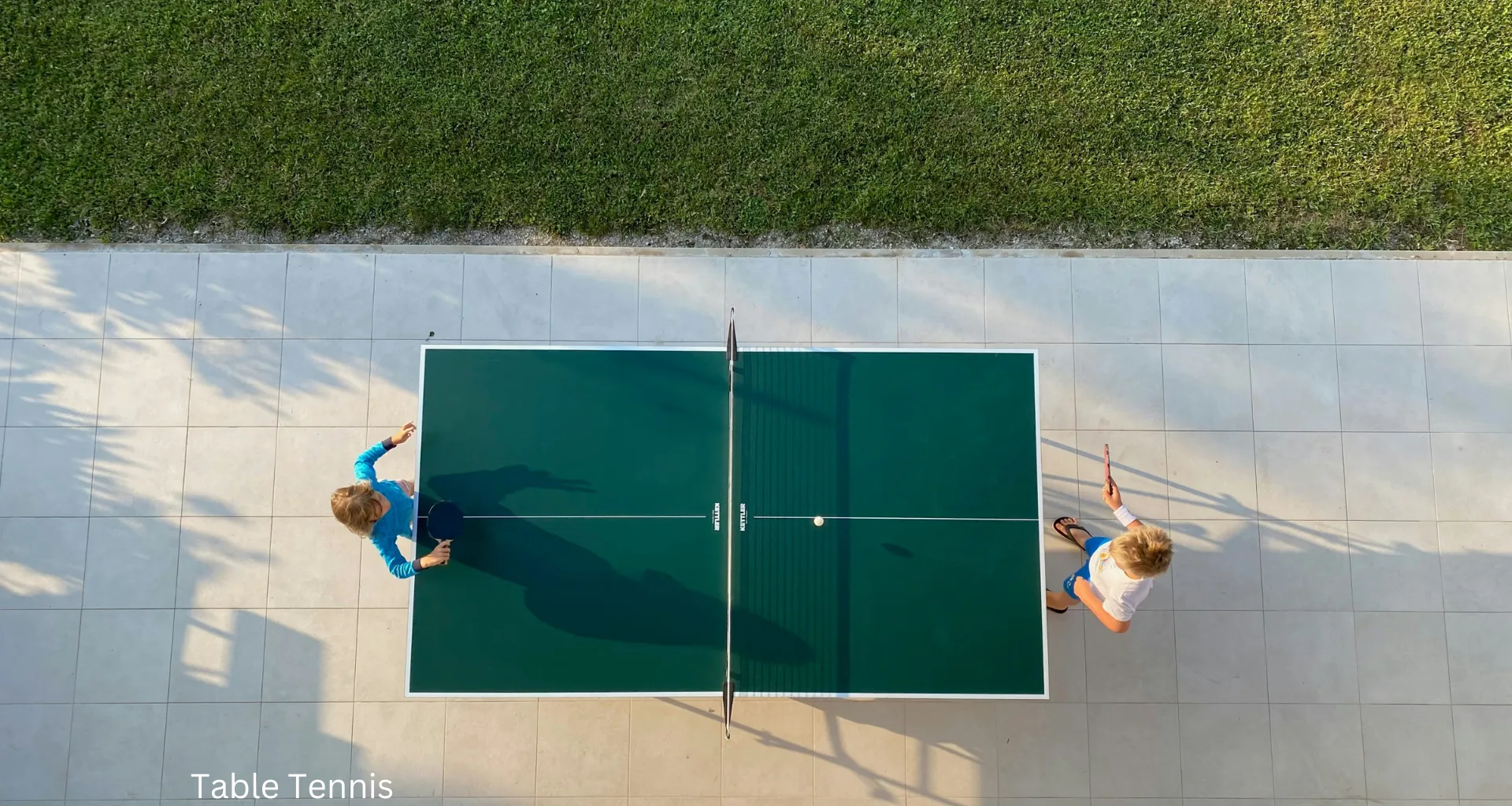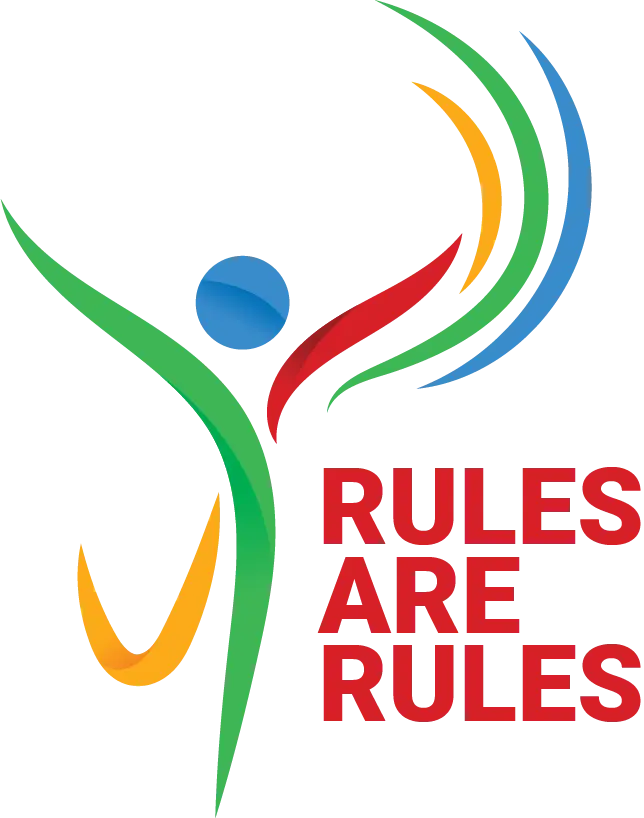Table Tennis Rules
Introduction
Table tennis which is also known as ping-pong is a racket sport derived from tennis but distinguished by its playing surface. It is played on a table, rather than the court on which players stand. It is played by two or more than two players. It is a very fast game and requires full time concentration and attention. The international table tennis federation (ITTF) is responsible for the changes in the rules and regulation in the game.

Basic Rules
The game is 11 points. It is played on a table. The volley is not allowed in this game. In this game the service can land anywhere in the table but the volleys are not allowed in this game. A server(umpire) must be present during the game.
The player who reaches the score first wins the match. But if the game is tied in 10-10 then the player who strives 2 points first wins the match. If the ball is hit and it comes back from the opponents table due to excessive spin, then it’s yours points.
Fouls
Players lose their points if they fail to hit the ball or make an illegal serve. When he touches the table with its free hand. Moves the table. Obstruct the ball with any part of the body. If the ball hits by the paddles hand then it is not a foul.
EQUIPMENTS
Ball
The international rules specify that the game is played with a sphere having a mass of 2.7 grams and a diameter of 40 millimeters. The rules say that the ball shall bounce up 24–26 cm when dropped from a height of 30.5 cm onto a standard steel block. The choice of ball color is made according to the table color and its surroundings. For example, a white ball is easier to see on a green or blue table than it is on a gray table. Manufacturers often indicate the quality of the ball with a star rating system, usually from one to three, three being the highest grade. As this system is not standard across manufacturers, the only way a ball may be used in official competition is upon ITTF approval (the ITTF approval can be seen printed on the ball).
RACKET & PADDLE
Players are equipped with a laminated wooden racket covered with rubber on one or two sides depending on the grip of the player. The wooden portion of the racket, often referred to as the “blade”, commonly features anywhere between one and seven plies of wood. According to the ITTF regulations, at least 85% of the blade by thickness shall be of natural wood. The average size of the blade is about 17 centimeters (6.7 in) long and 15 centimeters (5.9 in) wide.
Table tennis regulations allow different rubber surfaces on each side of the racket. Various types of surfaces provide various levels of spin or speed, and in some cases they nullify spin. For example, a player may have a rubber that provides much spin on one side of their racket, and one that provides no spin on the other.
By flipping the racket in play, different types of returns are possible. To help a player distinguish between the rubber used by his opposing player, international rules specify that one side must be black while the other side must be a bright color clearly distinguishable from black and from the color of the ball.
TABLE
The table is 2.74 m long, 1.525 m wide, and 76 cm high with any continuous material so long as the table yields a uniform bounce of about 23 cm when a standard ball is dropped onto it from a height of 30 cm, or about 77%. The table or playing surface is uniformly dark colored and matte, divided into two halves by a net at 15.25 cm in height. It approves only wooden tables or their derivatives. Concrete tables with a steel net or a solid concrete partition are sometimes available in outside public spaces, such as parks.
GAMEPLAY
STARTING A GAME
According to ITTF rules, the first service is decided by lot, normally a coin toss. It is also common for one player (or the umpire/scorer) to hide the ball in one or the other hand, usually hidden under the table, allowing the other player to guess which hand the ball is in. The correct or incorrect guess gives the “winner” the option to choose to serve, receive, or to choose which side of the table to use.
SERVICE and RETURN
In game play, the player serving the ball commences a play. The server first stands with the ball held on the open palm of the hand not carrying the paddle, called the freehand, and tosses the ball directly upward without spin. The server strikes the ball with the racket on the ball’s descent so that it first touches the server’s court, and then touches directly the receiver’s court without touching the net assembly.
The ball must remain behind the end line and above the playing surface of the table at all times during the service. The server’s body or clothing cannot be used to obstruct sight of the ball; the opponent and the umpire must have a clear view of the ball at all times. If the umpire is doubtful of the legality of a service, they may first interrupt play and give a warning to the server. If the serve is a clear failure or is doubted again by the umpire after the warning, the receiver scores a point.
If service is “good”, then the receiver must make a “good” return by hitting the ball back before it bounces a second time on receiver’s side of the table so that the ball passes the net and touches the opponent’s court, either directly or after touching the net assembly. Thereafter, the server and receiver must alternately make a return until the rally is over. Returning the serve is one of the most difficult parts of the game, as the server’s first move is often the least predictable and thus most advantageous shot due to the numerous spin and speed choices at the server’s disposal.
SCORING
A point is scored by the player for any of several results of the rally.
- The opponent fails to make a correct service or return.
- After making a service or a return, the ball touches anything other than the net assembly before being struck by the opponent.
- The ball passes over the player’s court or beyond their end line without touching their court, after being struck by the opponent.
- The opponent obstructs the ball.
- The opponent strikes the ball twice successively. The hand that is holding the racket counts as part of the racket and that making a good return off one’s hand or fingers is allowed. It is not a fault if the ball accidentally hits one’s hand or fingers and then subsequently hits the racket.
- The opponent strikes the ball with a side of the racket blade whose surface is not covered with rubber.
- The opponent moves the playing surface or touches the net assembly.
- The opponent’s free hand touches the playing surface.
- As a receiver under the expedite system, completing 13 returns in a rally.
- The opponent that has been warned by the umpire commits a second offense in the same individual match or team match. If the third offense happens, 2 points will be given to the player. If the individual match or the team match has not ended, any unused penalty points can be transferred to the next game of that match.
A game shall be won by the player first scoring 11 points unless both players score 10 points, when the game shall be won by the first player subsequently gaining a lead of 2 points. A match shall consist of the best of any odd number of games. In competition play, matches are typically best of five or seven games.
